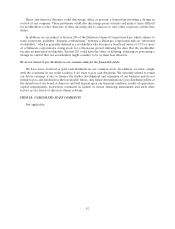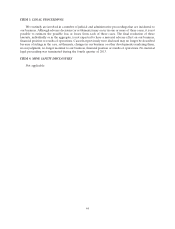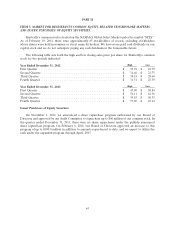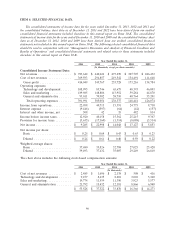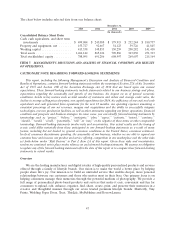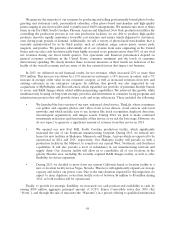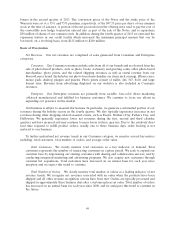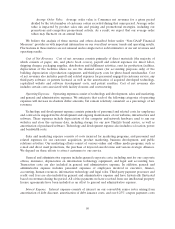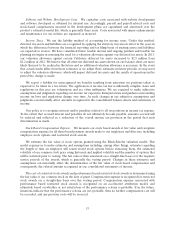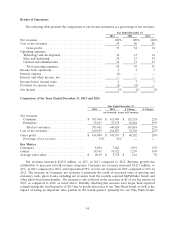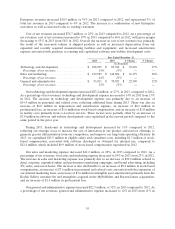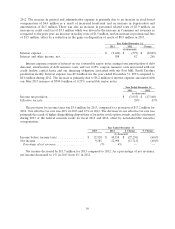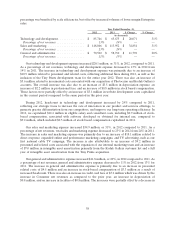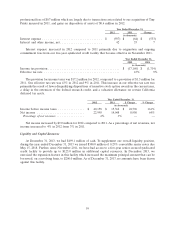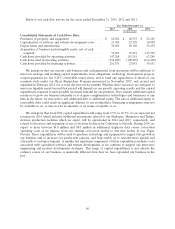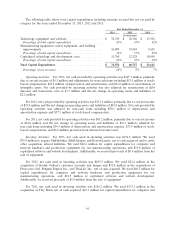Shutterfly 2013 Annual Report Download - page 54
Download and view the complete annual report
Please find page 54 of the 2013 Shutterfly annual report below. You can navigate through the pages in the report by either clicking on the pages listed below, or by using the keyword search tool below to find specific information within the annual report.based on historical data. The provision for estimated returns is included in accrued expenses. During the
year ended December 31, 2013, returns totaled approximately 1% of net revenues and have been within
management’s expectations.
We periodically provide incentive offers to our customers in exchange for setting up an account and to
encourage purchases. Such offers include free products and percentage discounts on current purchases.
Discounts, when accepted by customers, are treated as a reduction to the purchase price of the related
transaction and are presented in net revenues. Production costs related to free products are included in
cost of revenues upon redemption.
Our advertising revenues are derived from the sale of online advertisements on our websites.
Advertising revenues are recognized as ‘‘impressions’’ (i.e., the number of times that an advertisement
appears in pages viewed by users of the Company’s websites) are delivered; as ‘‘clicks’’ (which are
generated each time users of our websites click through the advertisements to an advertiser’s designated
website) are provided to advertisers; or ratably over the term of the agreement with the expectation that
the advertisement will be delivered ratably over the contract period.
Inventories. Our inventories consist primarily of paper, photo book covers and packaging supplies
and are stated at the lower of cost on a first-in, first-out basis or net realizable value. The value of
inventories is reduced by an estimate for excess and obsolete inventories. The estimate for excess and
obsolete inventories is based upon management’s review of utilization of inventories in light of projected
sales, current market conditions and market trends.
Fair Value. We record our financial assets and liabilities at fair value. The accounting standard for fair
value provides a framework for measuring fair value, clarifies the definition of fair value and expands
disclosures regarding fair value measurements. Fair value is defined as the price that would be received to
sell an asset or paid to transfer a liability (an exit price) in an orderly transaction between market
participants at the reporting date. The accounting standard establishes a three-tier hierarchy, which
prioritizes the inputs used in the valuation methodologies in measuring fair value:
Level 1 – Quoted prices in active markets for identical assets or liabilities
Level 2 – Inputs other than Level 1 that are observable, either directly or indirectly, such as quoted
prices for similar assets or liabilities; quoted prices in markets that are not active; or other inputs
that are observable or can be corroborated by observable market data for substantially the full
term of the assets or liabilities.
Level 3 – Unobservable inputs that are supported by little or no market activity and that are
significant to the fair value of the assets or liabilities.
Goodwill and Intangible Assets. Goodwill represents the excess of the purchase price over the fair
value of the net tangible and identifiable intangible assets acquired in a business combination. Intangible
assets resulting from the acquisition of entities accounted for using the purchase method of accounting are
estimated by management based on the fair value of assets received. Intangible assets are amortized on a
straight-line basis over the estimated useful lives which range from one to sixteen years, and the
amortization is allocated between cost of net revenues and operating expenses. Goodwill and intangible
assets with indefinite lives are not subject to amortization, but are tested for impairment on an annual basis
during our fourth quarter or whenever events or changes in circumstances indicate the carrying amount of
these assets may not be recoverable.
52


